Now our work really begins! We have to change the boat over from passage mode to cruising mode and do everything ourselves! Suffice to say it was a huge benefit to have competent sailors and pleasant boat mates like Bob and Wally to help on the offshore passages. Even on short, inter-island day sails their assistance spoils us, as we soon were reminded….
We departed Crown Bay at 0830 the next morning, November 24, and headed back east to spend Thanksgiving Day in Christmas Cove. There is no Thanksgiving Cove. We sailed with full main and genoa upwind on east winds 9-13. It was a nice sail and despite the water being too shallow for our favorite offshore fish, we trolled with hopes for a nice Turkey Day dinner fish of some edible sort. We're saving our frozen turkey breast for later. We enjoyed Thanksgiving Day with a lengthy visit from a brown booby who entertained us while perched comfortably it seems on our bow sprit.
Now for the "we sure do miss Bob and Wally" part: Just as we were planning to tack for final approach to Christmas Cove we were distracted by hooking a large 'cuda on a rod on the port side. We hadn’t practiced double handed fishing under sail since last winter--only two people to do five or six vital jobs. Trying to slow the boat we went into irons (stalled), backwinded the genoa, and drifted back over the second line we had out on the starboard side. After finally getting the fish to the transom and released - cutting the line just above the hook - we saw the starboard line wrapped around the port side saildrive and rudder. We "completed" the tack and were able to grab the line with a boat hook behind the transom, pull it up, cut it to save the bait, and were able to reel in the rest, finally freeing it from the saildrive/rudder. Whew. No Turkey Day fish, but we were thankful, nonetheless, for our good fortunes – and especially for having Bob and Wally on the passage….
Over the next four days we slowly migrated back to Salt Pond Bay, St. John, both waiting out squally weather and positioning ourselves for the approximate 33 nm run directly south to St. Croix to visit the famous Buck Island Reef National Monument. We spent another night in Christmas Cove, a night in Great Lameshur Bay, and two nights in Salt Pond Bay. Before departing the States, we had purchased a highly acclaimed Reef Guide set of books that would help us identify reef fish, coral and other creatures and learn more about fish behavior—a total of four books in all written by Paul Humann and Ned DeLoach. These books with their color illustrations are fabulous and we were looking forward to using them to identify and record our snorkeling “finds”. Donna’s first effort was to identify the Sea Cucumber seen while snorkeling at Christmas Cove. Our initial “lookup” turned out to be the “Donkey Dung Sea Cucumber”—we could tell this research was going to be fun!
On November 29, the weather became perfect for the run to St. Croix – NNE 8-12 and we flew a spinnaker the whole way. We departed at 0750 and arrived in Christiansted less than five hours later. On the way we hooked, then lost a small mahi and later hooked a very large UFO (unidentified fishy object). With the spinnaker up there was nothing we could do to easily slow the boat, but even if we had it might not have mattered - this fish took line like a tow truck and didn’t look back. It broke the surface once waaaaaay behind the boat and finally broke the line at the swivel just ahead of the bait leader. We suspect it was a big wahoo as it didn’t jump like a mahi or billfish and didn’t dive like a tuna.
Arriving in Christiansted for our first visit to St. Croix, we anchored in the harbor in front of the historic and prominent Fort Christiansvaern at 1230. We went ashore after lunch to stroll around and enjoy the Old Dutch architecture, visit the National Park HQ to obtain the necessary permit to anchor overnight at Buck Island, and to restock rum.
We found Christiansted to be delightful and the north coast of St. Croix to be very picturesque. We soon regretted not visiting this island before. It is surrounded by the largest barrier reef system in the Caribbean, and thus has fantastic diving and snorkeling. St. Croix is the biggest Virgin, but much less crowded than the others. Being more fertile than many islands, it was known as The Garden Spot of the Caribbean during colonial times. The rolling hills are verdant green and, being still relatively unspoiled and undeveloped, the sparse developments that dot the hillside remain quite picturesque.
The island does not host the very large cruise ships as does St. Thomas; a few smaller cruise ships visit the island dock in Frederiksted on the west coast. Christiansted is quite laid back and caters to far fewer tourists than St. Thomas and St. John. The town is well kept and the tidy neoclassic Danish architecture is lovely with its simple lines, along with cobblestone sidewalks and their arched arcades that protect pedestrians from sun and rain. It’s clear that many newly constructed buildings succeeded as well in capturing this historical influence. The historic buildings seem well kept with the old Customs House undergoing restoration while we were there. An easy walk through parkland to the nicely restored Fort affords a great view of the harbor area, is complete with canons and dungeons and is dramatically lit at night.
Our successful quest to obtain the required permits to visit and anchor overnight at Buck Island began at the park office inside the Fort to fill out forms and continued down the street in the HQ offices to get permission to spend the night. The park officials we interfaced with were very friendly and professional.
Note to other cruisers: having the permit to visit Buck Island and anchor in the specified anchorage does not include anchoring overnight – this is a separate action. Neither aspect costs anything – it seems the formalities are simply intended to make sure you know the rules – no dumping, taking, etc. So, when you fill out the forms for the anchoring permit, immediately request the anchor overnight permission.
Having succeeded in obtaining the permits, we spent only one night in Christiansted and departed 0930 the next morning (30 November) for the short sail to Buck Island. The anchorage area on the west side of the island is identified on handouts provided by the Park authorities. We had difficulty getting the anchor to set as what looks like sand a reasonable distance off the beach is actually sand over hard marl. We did get a set after several tries, but local visiting boats all anchored much closer to shore. Dave swam the areas later and concluded good anchoring sand is available closer in and the depth carries very close to shore, so on our next visit we’ll set closer in.
Buck Island Reef National Monument is uninhabited and includes the 176-acre island and 18,839 acres of submerged land and coral reef system. First protected in 1948, the area was proclaimed a national monument in 1961 and expanded in 2001 to preserve “one of the finest marine gardens in the Caribbean Sea”. Endangered and threatened species living and nesting here include the brown pelican, least tern, and hawksbill, leatherback, and green sea turtles. Two-thirds of the island is surrounded by an elkhorn coral barrier reef.
The beach area at the anchorage is absolutely lovely--sugar sand with lapping gin clear water a zillion shades of blue. But the highlight of Buck Island is the reef accessible at the east end of the island complete with an underwater snorkel trail with interpretive signs that meander through coral grottoes. To get to the reef vessels up to 42 feet length can enter the lagoon on the south side of the island and transit inside the lagoon to mooring balls just inside the reef at the east end. Since Pas de Deux is 47 feet we had to take the dinghy to the reef moorings. Just as well – Dave concluded even with the calm weather we had, after seeing it, he wouldn’t have wanted to bring the mothership inside the very narrow lagoon area.
We dinghied to the reef each of the two days we spent at the island. The snorkeling was excellent and we’ve never seen such a healthy population of brain corals – numerous and as large as boulders with absolutely gorgeous intricate designs. There is much to be said for this because in 1989 Hurricane Hugo with its sustained 150-mph winds gusting to 204 mph made a direct hit on St. Croix leaving the entire island without electricity for a full year. The terrible devastation was still quite visible to the reef, where scouring and pounding by storm waves destroyed most of the south barrier reef and pushed its crest 90 feet landward, narrowing an already narrow south lagoon.
Apparently, those that monitor the reef indicate that there have been dramatic signs of elkhorn coral re-growth since 2000 (a decade after Hurricane Hugo). We saw a number of examples of significant elkhorn in good condition. Hurricane Hugo was best evidenced throughout the grottoes where the sea floor was entirely scattered and criss-crossed with dead corals, like pieces of timber fallen after a great forest fire. But the centuries-old brain corals well developed in this area are a testament to their strength to withstand the fury of Hugo and we are the benefactors of that—we’re proud that the United States is protecting this reef as a National Monument.
We disagreed a bit on the usefulness of the underwater marked trail. The markers were placards mounted on concrete bases describing nearby coral varieties and prevalent fish species. Dave joked that the coral was well behaved but the fish didn’t stay near their markers. Dave felt it was silly to have the markers that described fish, although Donna found some purpose in those that highlighted a “habit” of a particular fish, finding that informative.
Donna was more concerned that the markers were not well maintained. Dave cleaned up one that was covered with algae to find it described barracuda – and right when he finished (honestly—we’re not kidding) there was a 'cuda staring at him. “OK, OK, sorry about the silly comment…” The ‘cuda on the other hand was saying, “Hey man, what you doin’ messin’ with my marker? I know where I belong.”
Donna thinks that the handful of concessionaires who make big money taking tourists out to the reef should act as a group to volunteer to maintain the markers on a rotational basis. It wouldn’t take a diver more than an hour to clear every marker now and then; the trail is definitely worthwhile swimming--and beyond it to great reef areas seaward.
We were the only boat for the first evening and night anchored at Buck Island after all the day trip tour boats had departed. We had the whole National Monument to ourselves. What a treat! Park rules required that from June through November, because the island is turtle nesting (and hence hatching) habitat, boats anchoring overnight must keep noise and lights to a minimum. Bright lights could apparently confuse hatchlings from making their proper way to the sea. We assured the Park Ranger that this would not be a problem (if he only knew we were fast asleep by 8PM…). We would dine in peace and quiet by candlelight….
On our second day at Buck Island we went ashore in the morning in the dinghy and hiked the marked land trail. This went up over the hill and to a high observation platform (nicely fashioned) from which we were afforded terrific views of the barrier reef on the north side of the island as well as the other Virgins, clearly visible to the north.
We departed Buck Island on December 2, vowing to return with any guests who may visit us in the Virgins. Not done yet with St. Croix, we sailed past Christiansted a short way to visit the Salt River Bay where in 1992 Congress created the Salt River Bay National Historical Park and Ecological Preserve as part of the National Park System. (Our country is so good at this!!!) The historical aspect is that this is the only documented Columbus landing site on (now) U.S. soil. And it wasn’t a pleasant experience. His armed men went ashore looking for water and were confronted by a canoe full of locals with bows and arrows. In the fight that ensued, each side had one fatality and all the remaining natives were taken as slaves.
Entering the very safe anchorage of Salt River Bay was a bit of a challenge. Our cruising guide advised obtaining local knowledge before entering, as the entrance through the reef is narrow, markers might not exist, and sand shoaling from both sides of the Bay frequently changes. Dave called the marina located in the Bay and they advised having a guide before trying to enter, and gave Dave some information on the visible buoy for the entrance. “But call the dive shop and maybe you can follow one of their dive boats back in, west” was their suggestion. The dive shop person who answered their phone was helpful, advised us of a dive boat returning around 1130, but advised us we’d have no problem if we had experience reading water depths. She also proceeded to inaccurately describe the buoys—claiming there would be a red and a green when in fact only a red existed. Word in the guidebook is that you have to make a turn to starboard when a spire roof aligns with a gazebo on the beach as well…. Just the type of challenge we love!
With the relatively calm conditions, Dave decided to give the entrance a try unassisted (it couldn’t possibly be any more difficult than Hog Cay Cut on Great Exuma in the Bahamas, could it? and we’ve handled that successfully). If we saw the dive boat when we arrived we could ask to follow them in. Of course, no dive boat was around when we got to the entrance and in we went. Getting through the reef was the easy part, but once inside the water was a bit cloudy and reading the depth harder than normal. But our electronic charts were accurate, and trusting its routing information we got in without touching, Donna calling off the depth constantly while Dave was reading the water ahead. We never saw less than 6.2 feet depth. Pas de Deux draws 4.25 feet under the rudders so we were good.
Once in and secured – the anchor set easily on a sandy bottom– we looked around at the green hillsides. Donna took up her binoculars to get a closer look at some of the mansions built on the hills that in her opinion rivaled those you would find overlooking the ocean in southern California. One prominent large white house on the western point of the entrance to the Bay was purchased by the government in 2004 and will eventually house a museum of pre-Columbian artifacts found within the Park.
Unfortunately, the water was too cloudy to snorkel (although several turtles made their appearance as soon as we came inside the harbor). The harbor itself contained a singular marina and there were several seemingly local boats anchored in the harbor area nearest that marina (some derelict). We spent just one night in Salt River Bay and did not leave the boat on this occasion. We departed the next morning, December 3, at 0945 for Vieques in the Spanish Virgin Islands, which we had visited last winter and wanted to visit again. The winds were favorable for heading northwest toward this destination.
Settling Into Another Season in Paradise
Saturday, December 03, 2011
 St Croix, Saint Croix Island, Virgin Islands US
St Croix, Saint Croix Island, Virgin Islands US
Other Entries
-
163The Definition of Cruising
Apr 03244 days prior Charlotte Amalie, Virgin Islands USphoto_camera1videocam 0comment 0
Charlotte Amalie, Virgin Islands USphoto_camera1videocam 0comment 0 -
164Another Group of Virgins
Apr 23224 days prior Cayo de Luis Pena, Puerto Ricophoto_camera20videocam 1comment 0
Cayo de Luis Pena, Puerto Ricophoto_camera20videocam 1comment 0 -
165Passage to the Turks and Caicos Islands
Apr 27220 days prior French Cay, Turks and Caicosphoto_camera12videocam 1comment 0
French Cay, Turks and Caicosphoto_camera12videocam 1comment 0 -
166Overnight Passage to the Bahamas
May 01216 days prior Salina Point, Bahamasphoto_camera8videocam 2comment 0
Salina Point, Bahamasphoto_camera8videocam 2comment 0 -
167Passage Through the Jumentos and Hog Cay Cut
May 05212 days prior Hog Cay Cut, Bahamasphoto_camera5videocam 0comment 0
Hog Cay Cut, Bahamasphoto_camera5videocam 0comment 0 -
168Transiting from the Exuma Sound to the Exuma Bank
May 09208 days prior Highborne Cay, Bahamasphoto_camera17videocam 2comment 0
Highborne Cay, Bahamasphoto_camera17videocam 2comment 0 -
169Northward to the Berry Islands
May 16201 days prior Great Harbour Cay, Bahamasphoto_camera7videocam 0comment 0
Great Harbour Cay, Bahamasphoto_camera7videocam 0comment 0 -
170To Sail or Not to Sail
May 23194 days prior Palm Beach, United Statesphoto_camera3videocam 0comment 0
Palm Beach, United Statesphoto_camera3videocam 0comment 0 -
171Homeward Bound
May 30187 days prior Willoughby Harbor Marina, United Statesphoto_camera8videocam 0comment 0
Willoughby Harbor Marina, United Statesphoto_camera8videocam 0comment 0 -
172Hobie Fleet 32 Day Sail
Jul 03153 days prior Willoughby Harbor Marina, United Statesphoto_camera11videocam 0comment 0
Willoughby Harbor Marina, United Statesphoto_camera11videocam 0comment 0 -
1732011 Summer Maintenance
Nov 0132 days prior Reedville, United Statesphoto_camera10videocam 0comment 0
Reedville, United Statesphoto_camera10videocam 0comment 0 -
174Preparations for 2011 Passage to Eastern Caribbean
Nov 1023 days prior Reedville, United Statesphoto_camera4videocam 0comment 0
Reedville, United Statesphoto_camera4videocam 0comment 0 -
175First 3 Days of Passage Norfolk to Virgin Islands
Nov 1320 days prior Somewhere in the Atlantic Ocean, Internationalphoto_camera8videocam 2comment 0
Somewhere in the Atlantic Ocean, Internationalphoto_camera8videocam 2comment 0 -
176Mild Conditions and the Mid-Ocean Swim -Days 4 + 5
Nov 1518 days prior Somewhere In The Atlantic Ocean, Internationalphoto_camera11videocam 1comment 0
Somewhere In The Atlantic Ocean, Internationalphoto_camera11videocam 1comment 0 -
177Our Progress Speeds Up – Days 6 and 7
Nov 1716 days prior Somewhere in Atlantic Ocean, Internationalphoto_camera1videocam 0comment 0
Somewhere in Atlantic Ocean, Internationalphoto_camera1videocam 0comment 0 -
178Targeting a Daylight Arrival –The Final Days
Nov 1914 days prior Soper's Hole, Virgin Islands USphoto_camera12videocam 0comment 0
Soper's Hole, Virgin Islands USphoto_camera12videocam 0comment 0 -
179Destination U.S. Virgin Islands with Wally and Bob
Nov 2310 days prior Charlotte Amalie, Virgin Islands USphoto_camera17videocam 0comment 0
Charlotte Amalie, Virgin Islands USphoto_camera17videocam 0comment 0 -
180Settling Into Another Season in Paradise
Dec 03 St Croix, Virgin Islands USphoto_camera25videocam 1comment 0
St Croix, Virgin Islands USphoto_camera25videocam 1comment 0 -
181Our Return to the Spanish Virgin Islands
Dec 1411 days later Culebra, Puerto Ricophoto_camera26videocam 1comment 0
Culebra, Puerto Ricophoto_camera26videocam 1comment 0 -
182Eastward Bound
Dec 1815 days later Charlotte Amalie, Virgin Islands USphoto_camera1videocam 0comment 0
Charlotte Amalie, Virgin Islands USphoto_camera1videocam 0comment 0 -
183Seeking New Destinations in the BVI
Dec 1916 days later Soper's Hole, Virgin Islands USphoto_camera0videocam 0comment 0
Soper's Hole, Virgin Islands USphoto_camera0videocam 0comment 0 -
184Exploring the Islands of Sir Francis Drake Channel
Dec 2623 days later Buck Island, Virgin Islands Britishphoto_camera15videocam 0comment 0
Buck Island, Virgin Islands Britishphoto_camera15videocam 0comment 0 -
185Exploring Virgin Gorda's North Sound
Jan 0735 days later Robin Bay, Virgin Islands Britishphoto_camera54videocam 7comment 0
Robin Bay, Virgin Islands Britishphoto_camera54videocam 7comment 0 -
186Moving Back Westward Through the BVI
Jan 1038 days later Valley Trunk Bay, Virgin Islands Britishphoto_camera11videocam 0comment 0
Valley Trunk Bay, Virgin Islands Britishphoto_camera11videocam 0comment 0 -
187Destination Little Jost Van Dyke
Jan 1139 days later Sandy Spit, Virgin Islands Britishphoto_camera7videocam 0comment 0
Sandy Spit, Virgin Islands Britishphoto_camera7videocam 0comment 0 -
188Great Expectations, Great Escapes
Jan 1240 days later Cane Garden Bay, Virgin Islands Britishphoto_camera1videocam 0comment 0
Cane Garden Bay, Virgin Islands Britishphoto_camera1videocam 0comment 0 -
189Final Winter Days in the British Virgin Islands
Jan 1543 days later Cane Garden Bay, Virgin Islands Britishphoto_camera5videocam 0comment 0
Cane Garden Bay, Virgin Islands Britishphoto_camera5videocam 0comment 0 -
190A Day in the Life
Jan 1644 days later Cruz Bay, Virgin Islands USphoto_camera0videocam 0comment 0
Cruz Bay, Virgin Islands USphoto_camera0videocam 0comment 0 -
191Short Visits with Friends Arriving in the Islands
Jan 2452 days later Crown Bay, Virgin Islands USphoto_camera15videocam 0comment 0
Crown Bay, Virgin Islands USphoto_camera15videocam 0comment 0 -
192Aiming for a Vacation to Remember
Feb 0362 days later Crown Bay, Virgin Islands USphoto_camera68videocam 6comment 0
Crown Bay, Virgin Islands USphoto_camera68videocam 6comment 0 -
193Rendezvous with S/V Southern Cross
Feb 0564 days later Brewers Bay, Virgin Islands USphoto_camera1videocam 0comment 0
Brewers Bay, Virgin Islands USphoto_camera1videocam 0comment 0 -
194Friends and Anemones
Feb 0766 days later Round Bay, Virgin Islands USphoto_camera39videocam 4comment 0
Round Bay, Virgin Islands USphoto_camera39videocam 4comment 0 -
195Destination Sint Maarten
Feb 1372 days later Simpson Bay, Saint Martinphoto_camera4videocam 0comment 0
Simpson Bay, Saint Martinphoto_camera4videocam 0comment 0 -
196Travel to the Enchanting Island of Saba
Feb 1978 days later Saba, Netherlands Antillesphoto_camera17videocam 1comment 0
Saba, Netherlands Antillesphoto_camera17videocam 1comment 0 -
197Around St. Maarten Multihull Regatta
Feb 2281 days later Simpson Bay, Saint Martinphoto_camera12videocam 1comment 0
Simpson Bay, Saint Martinphoto_camera12videocam 1comment 0 -
198Preps for the 32nd St. Maarten Heineken Regatta
Mar 0189 days later Simpson Bay, Saint Martinphoto_camera5videocam 0comment 0
Simpson Bay, Saint Martinphoto_camera5videocam 0comment 0

 St Croix, Saint Croix Island, Virgin Islands US
St Croix, Saint Croix Island, Virgin Islands US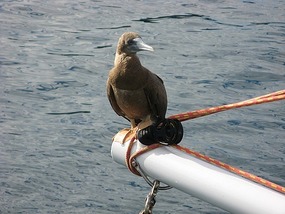
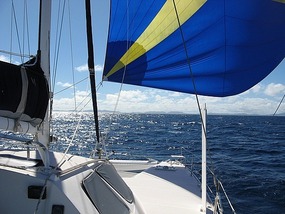
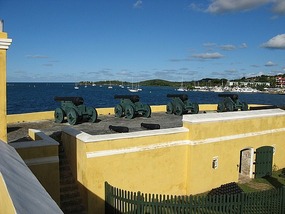
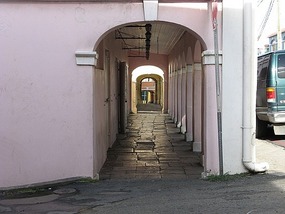
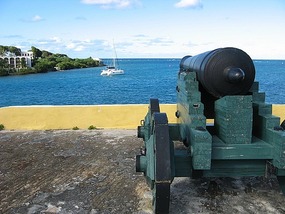

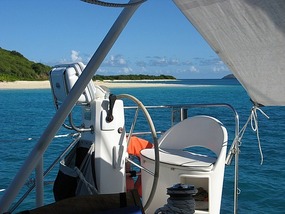
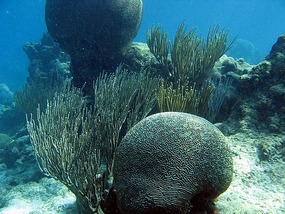
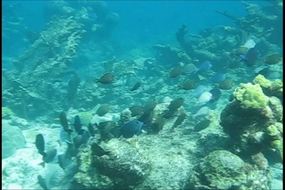
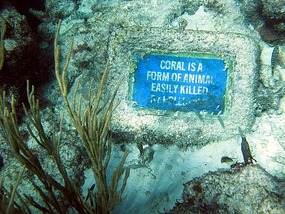
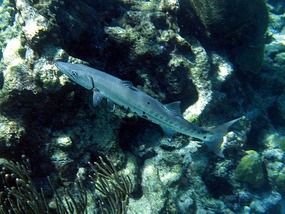
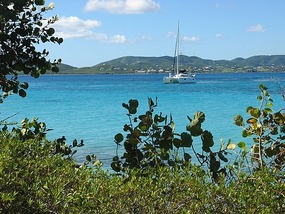
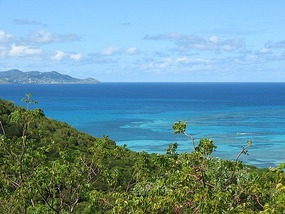











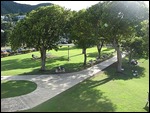
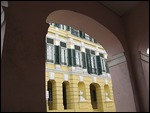



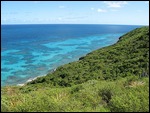
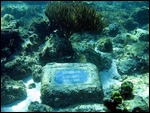
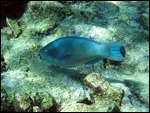
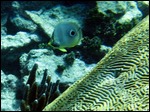
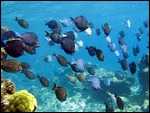
2025-05-23